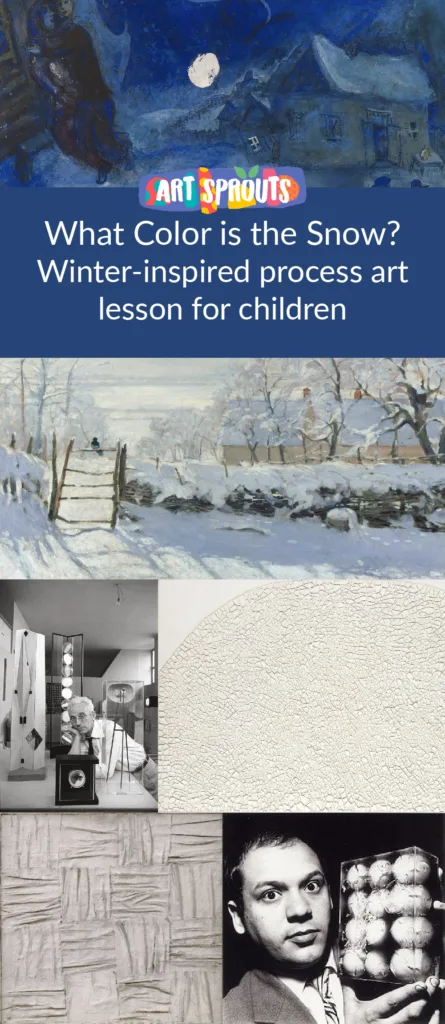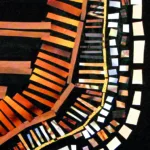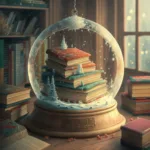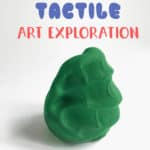As the winter season unfolds, bringing its unique blend of snow-covered landscapes and chilly mornings, it’s the perfect time to engage children in a winter-inspired process art activity. “What Color is the Snow?” invites young minds to explore the enchanting world of colors, textures, and light, drawing inspiration from the serene beauty of winter. Rooted in the educational philosophies of Montessori and Reggio Emilia, this activity is more than just an art project; it’s a sensory journey into the heart of creativity and observation.
Designed for children to experience art in a hands-on and exploratory manner, this activity takes cues from the innovative approach of Bruno Munari’s Art Labs. It challenges the conventional perception of colors, particularly white, as seen in the snowy season. As we dive into this winter-inspired process art activity, children will discover the varied shades of white through the eyes of famous artists like Claude Monet and Piero Manzoni. Join us in this artistic adventure and unlock a world where every snowflake tells a story, and every blank canvas is an opportunity for wonder and learning.
Read also:
- From Bruegel to Japanese Ukiyo-E: The Impact of Winter Paintings on the Art World
- Best Snow Children’s Books: A Heart-warming Winter Reading List
- 17 Lovely Children’s Books about Winter
- Design as Play: Who is Bruno Munari?

What Color is the Snow? Winter-inspired process art activity for children
Objectives
- Color Description and Perception: Students will learn to describe and understand colors in terms of shades and temperature, focusing on how light and environment affect color perception.
- Texture and Materiality Exploration: The activity will introduce students to the concept of texture in art, emphasizing both visual and tactile experiences and how these elements influence color and form.
- Understanding Dimensionality: Students will explore two-dimensionality and three-dimensionality in art, learning how artists manipulate these aspects through texture, light, and material.
- Art, Light, and Environment Interaction: The activity will demonstrate how environmental and lighting conditions can influence the creation and perception of art, particularly in monochrome compositions.
Chagall’s Blue Snow: A Gateway to Discussing Perception and Light
In Marc Chagall’s “Dans mon Pays,” we venture into a snowy landscape portrayed almost entirely in shades of blue. This intriguing choice leads us to question: What color is snow, really?
Typically, snow is perceived as white because it reflects most of the sunlight hitting it. However, snow can appear in different colors based on various factors, including light and the environment. Chagall’s use of blue to depict snow is a fascinating exploration of this concept. Blue, often associated with shadows in snow, reflects the sky’s color and the subtle absorption of longer wavelengths (like red and yellow) by the snow.
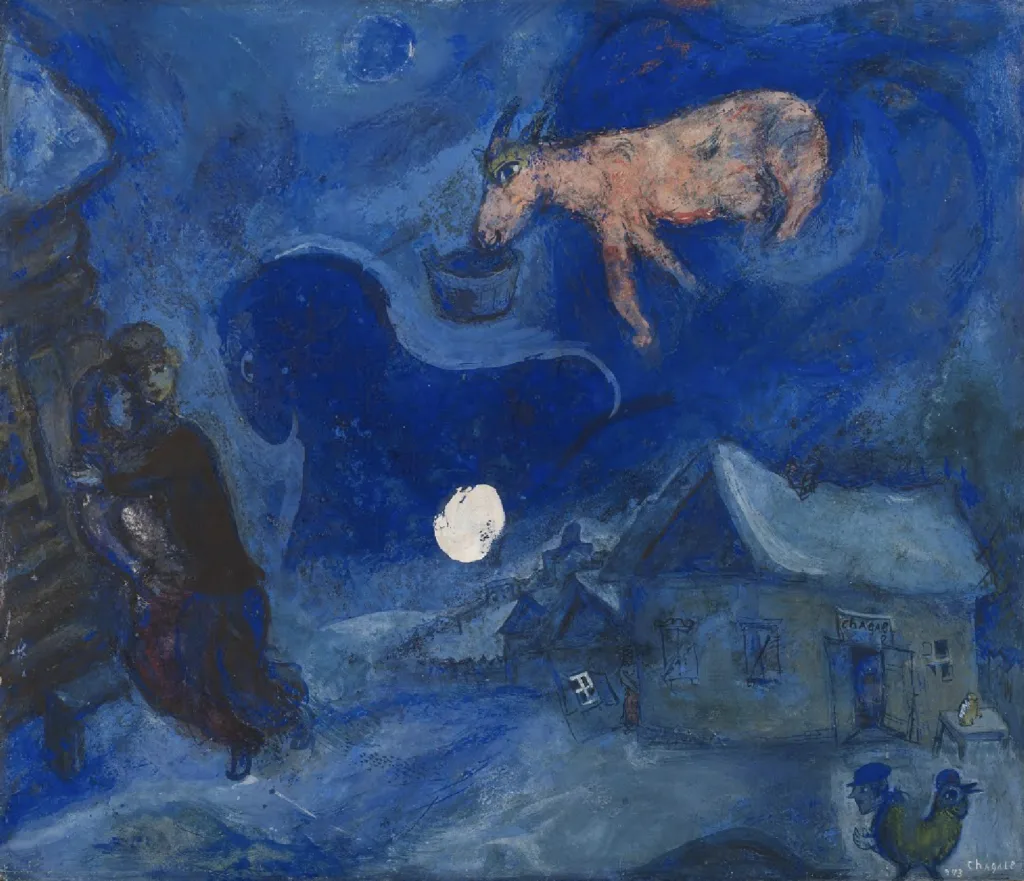
This artistic choice by Chagall serves as a brilliant introduction to our discussion on perception and light. It begs the question: why can we still identify the snowy landscape even when it’s painted in blue? The answer lies in our understanding of context and the interplay of light and color. Our brains interpret the scene using environmental cues, the way light is portrayed, and our past experiences with similar landscapes.
Classroom Exploration:
Younger Students: Start by asking them to describe the color of snow in Chagall’s painting and in real life. Discuss how light can change the color we see.
Older Students: Dive deeper into the science of light and color perception. Why does snow look blue in the shade and white in the sunlight? Use this to explore the concept of color temperature and how artists use color to convey mood and depth.
As we move to other artworks like Monet’s “The Magpie” and Manzoni’s Achrome series, students can continue to explore how artists use color, or the absence of it, to play with our perception of texture, light, and space.
Claude Monet’s “The Magpie”
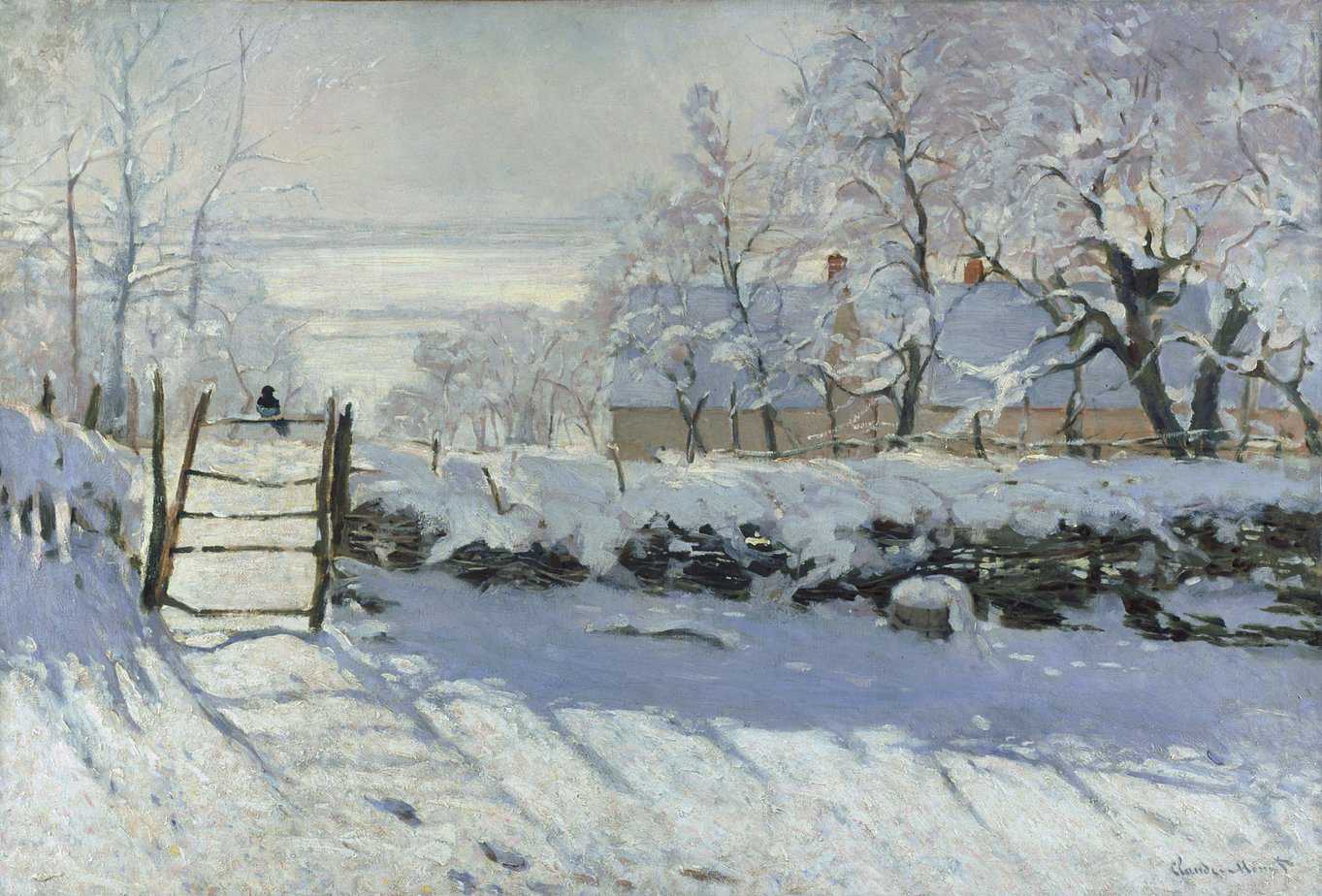
The artwork at a glance: A winter landscape, where a solitary magpie sits atop a gate.
Deep Dive: Monet’s depiction of snow was revolutionary. He challenged the conventional notion of snow as purely white by incorporating a spectrum of colors, reflecting the various effects of light and shadow. This use of color captures the transient nature of light and its impact on our perception of color. It’s an exploration of how light influences what we see and how we interpret our environment.
Classroom Discussion: How does Monet make the snow appear so vibrant and dynamic? Discuss the interplay of light, shadow, and color in creating a realistic yet impressionistic portrayal of a winter scene.
Piero Manzoni’s Achrome Series
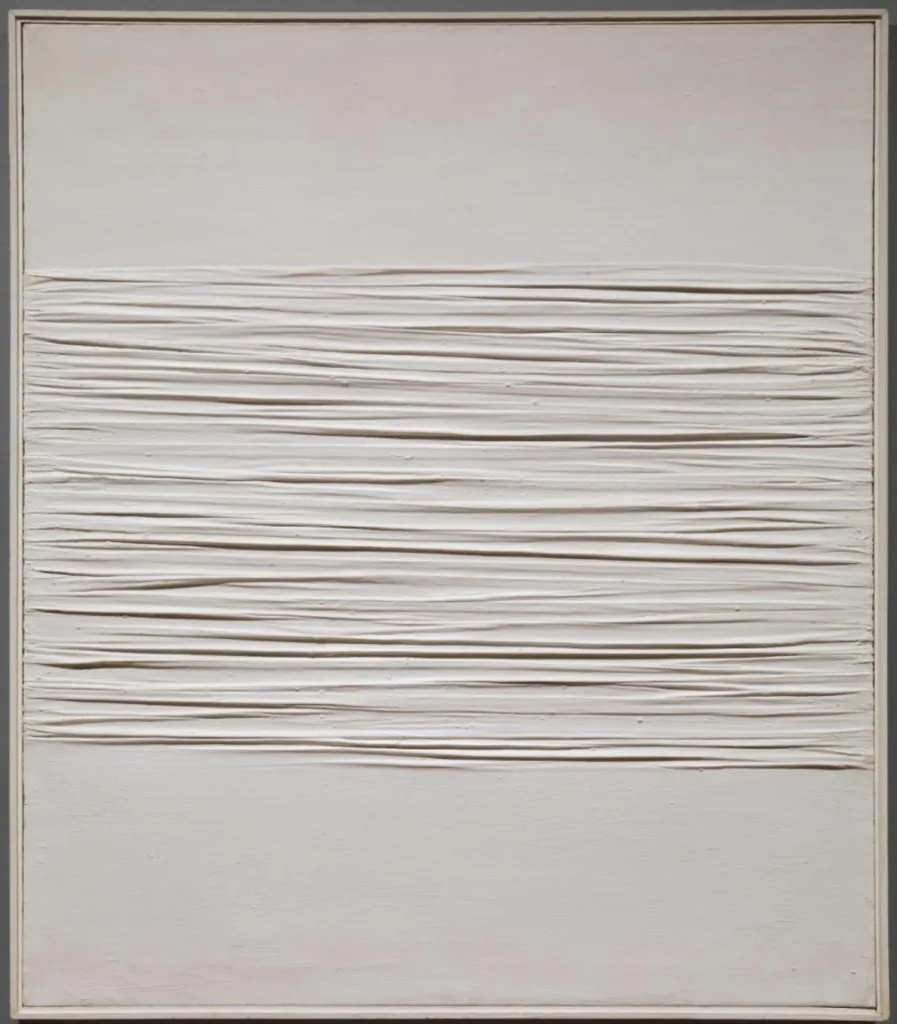
The artwork at a glance: A series focusing on texture and material rather than color.
Deep Dive: Manzoni’s Achrome series strips away color to focus on the raw materials themselves, like canvas, cotton, and kaolin. This approach challenges the viewer to appreciate art in its purest form, focusing on texture and form. It’s a study of how removing color can intensify our focus on other sensory aspects.
Classroom Discussion: Encourage students to explore how the absence of color impacts their perception of texture and form.
Alberto Burri’s Bianco Series
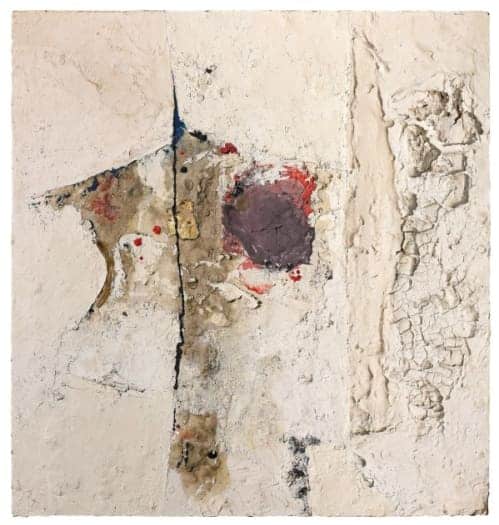
The artwork at a glance: A series where Burri explores the color white through various textures.
Deep Dive: Burri’s work in the Bianco series demonstrates how white, often considered a lack of color, can be full of depth and emotion. He uses different materials to show how texture can give life and character to a single color, making each piece a tactile experience.
Classroom Discussion: Discuss how different materials can transform the perception of a single color. What emotions or ideas does each texture evoke?
Enrico Castellani’s Superficie Bianca
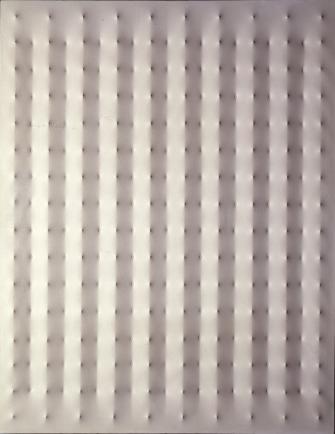
The artwork at a glance: Canvases manipulated to create a topographical effect.
Deep Dive: Castellani’s Superficie Bianca plays with the canvas’s surface to create a dynamic landscape of shadows and light. The work transcends traditional painting, entering a realm where the canvas itself becomes a sculptural element. It’s a visual exploration of how light interacts with physical forms to create depth and movement.
Classroom Discussion: Focus on how altering a two-dimensional surface can create a sense of three-dimensionality. How does this affect our perception of the artwork?
Kazimir Malevich’s White on White

The artwork at a glance: A white square on a white background, pushing the limits of minimalism.
Deep Dive: Malevich’s White on White is a radical step into abstract minimalism, where even color is reduced to its simplest form. This artwork invites contemplation on the nuances of shade and the boundaries of what constitutes an artwork. It’s a meditation on simplicity, form, and the essence of painting.
Classroom Discussion: Explore the subtleties of shade and texture. How does this minimalistic approach affect our understanding of art?
Robert Ryman’s White Paintings

The artwork at a glance: Paintings that explore the nuances of the color white.
Deep Dive: Ryman’s White Paintings are an in-depth study of the color white in its many shades and textures. Each painting, though seemingly simple, is a complex exploration of light, shadow, texture, and brushwork. This series is a testament to how a single color can convey a wide range of emotions and depth.
Classroom Discussion: Investigate how slight variations in texture and tone can create a diverse range of expressions within a single color.
Each of these artworks offers a unique perspective on the use of color, texture, and space, providing an enriching foundation for students to explore and understand the complexities of art beyond the conventional.
Drawing Inspiration from Bruno Munari’s Art Labs
This activity is heavily inspired by the innovative approach of Bruno Munari’s Art Labs. Munari was a pioneer in the realm of art and education, establishing unique spaces where children could deeply engage with art. These labs weren’t about following traditional art methods; they were about diving into a sensory world of art. Children in Munari’s labs got to explore and interact with a diverse range of materials, offering a more tactile and engaging way to understand art.
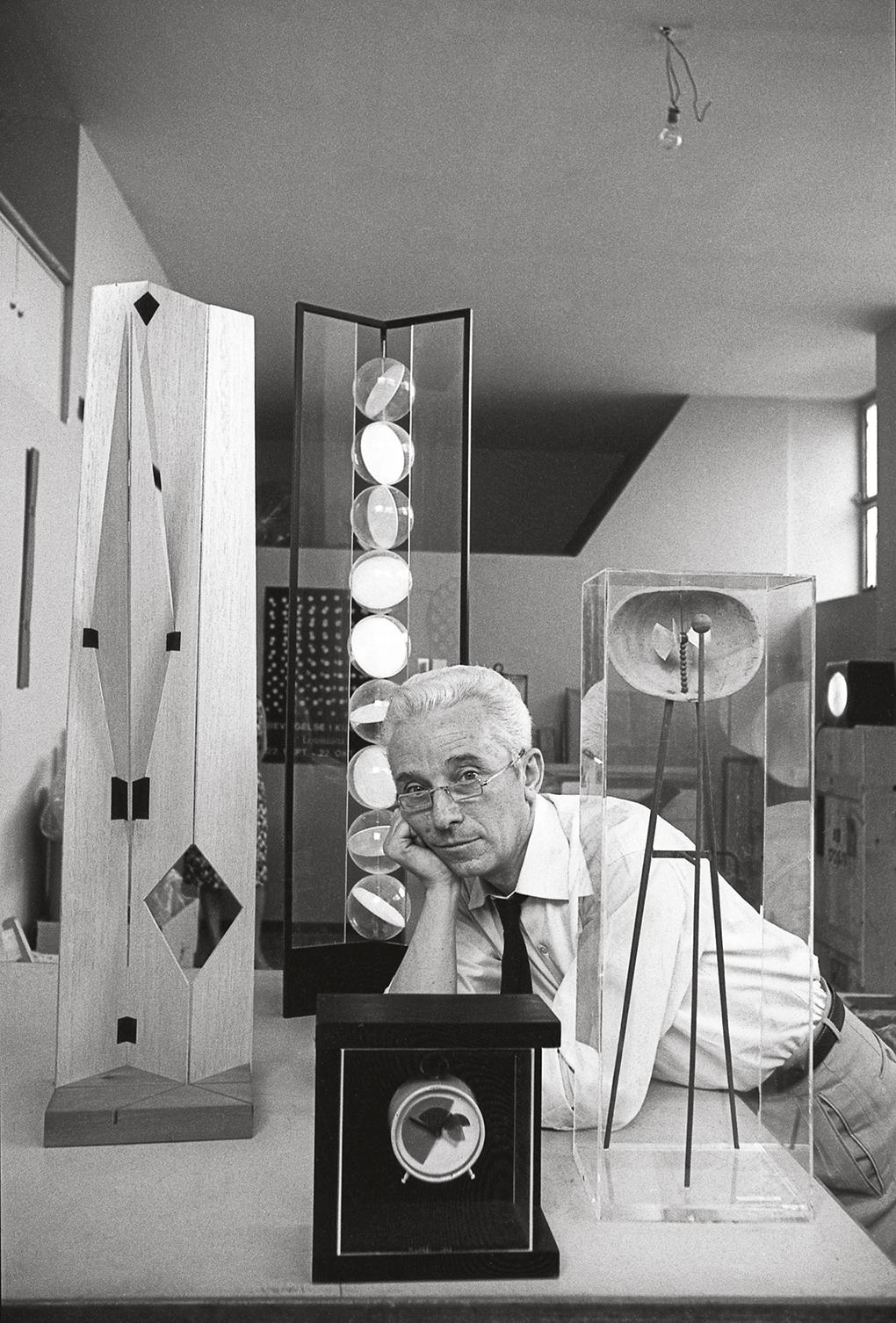
The beauty of these labs lies in their focus on learning through discovery and hands-on experiences. This approach is central to our activity. We encourage students to engage with different materials, sparking their curiosity and imagination. It’s about getting up close and personal with art, moving beyond just looking at it to truly experiencing it. This method is effective in nurturing not just artistic skills but also critical thinking and observational abilities.
Embracing Munari’s philosophy, this exploration into the nuances of white in art is both a sensory journey and a learning experience. It’s a chance for students to see art as something they can touch, feel, and interact with, making the learning process both enjoyable and profound. Munari’s Art Labs serve as an inspiration, reminding us that the true essence of learning art is found in the joy of exploration and creation.
Read also:
Part 1: “What Color Is the Snow?“
Material Gathering:
Prompt students to bring in or collect various white materials.
Encourage a wide range of materials such as cotton, paper, eggshells, and white fabrics to showcase diversity in textures and shades.
Find something white around you. How does it feel compared to other white objects?
Observe the different whites in your collection. Do they all look the same under this light?
Classroom Exploration:
Lay out all the collected materials. Encourage students to touch, feel, and visually analyze the different whites.
Touch and feel each material. Can you describe the texture? Is it smooth, rough, soft, or hard?
Look closely at each white object. Do some appear brighter or duller than others?
Group the whites by their shades or textures. What patterns do you notice?
Lighting Experiment:
Change the classroom’s lighting (natural light, dim light, bright artificial light) and observe how the perception of white changes. Try putting colored paper or fabric near the artwork to see how or if the color changes.
How does the appearance of each material change with different lighting?
Which materials look different under artificial light compared to natural light? Why might that be?
Discuss how lighting can alter our mood and perception of colors.
Visual and Tactile Analysis:
Encourage students to close their eyes and feel the materials, then open their eyes and describe them.
Describe the texture of the material you’re touching without looking at it. How does your perception change when you open your eyes?
Can you guess the material based on touch alone? What clues does your sense of touch give you about the color and texture?
Share your experience of how touch can provide a different understanding of an object compared to sight.
Part 2: “Monochrome (Achrome) Collage”
Collage Creation:
Invite students to use the gathered materials to create a monochrome collage, working individually or in groups.
Encourage them to consider texture as an element just as important as color or shape.
Focus on how the arrangement of different textures can create depth and contrast in the artwork.
Experiment with layering different textures. What effect does this create in the artwork?
Tactile Experience:
Invite students to explore their artwork through touch, understanding the physicality and texture.
Close your eyes and gently touch the collages. What story do they tell through touch?
Discuss how the tactile experience adds another layer of understanding and appreciation to the artwork.
Can you guess the materials used in your collage based solely on touch?
Environmental Interaction:
Move the artworks around the classroom, observing how different ambient colors and lighting conditions affect the perception of the collages.
Notice the changes in your collage as it interacts with different lighting. What new details emerge?
How does changing the artwork’s location affect its appearance and your perception of it?
Reflection and Discussion:
Encourage students to share their experiences and thoughts on the process.
How did focusing on texture and light instead of color influence your artistic decisions?
What did you learn about the interaction between art and environment through this activity?
Discuss how working with a single color and focusing on texture can alter the creative process and outcome.
Glossary:
- Achrome: Artworks that lack color, focusing instead on texture and material to convey meaning.
- Color Temperature: A characteristic of visible light that describes its color; often categorized as warm (reds, oranges) or cool (blues, greens).
- Light Perception: How light affects the way we see colors and objects.
- Monochrome: Artworks created using variations of a single color, emphasizing the use of texture and form.
- Process Art: An artistic movement and educational philosophy focusing on the process of creating art rather than the final product. It encourages exploration, experimentation, and personal expression.
- Texture: The perceived surface quality or feel of an artwork, which can be visual (seen) or tactile (felt).
- Three-dimensionality: Art that occupies space and has depth in addition to height and width, like sculptures.
- Two-dimensionality: Art that has height and width but no depth, such as paintings or drawings.
- Visual Perception: The ability to interpret and make sense of visual information from the environment, such as colors, shapes, and spatial relationships.
Read also:
External resources:
- MunArt.org: the most complete website on Bruno Munari’s art and philosophy
- Munlab: Workshops based on Bruno Munari’s method
- Tate: Six Winter Scenes in Art
Further exploration:
- Art History Deep Dive: Explore more artists who play with the concept of color, light, and texture. Research artists like James Turrell, known for his immersive light installations, or Yves Klein, with his monochromatic blue paintings.
- Cultural Studies of Winter: Explore how different cultures around the world perceive and depict winter in art. This could include traditional storytelling, folklore, and art creation reflecting different cultural interpretations of winter.
- Science of Color and Light: Delve into the science behind color perception and light. Conduct simple experiments demonstrating how light interacts with objects and how our eyes perceive color.
- Literature and Art: Read winter-themed stories or poems and have students create art inspired by these narratives, focusing on the depiction of snow and winter landscapes.
I’d love to hear from you! Share your thoughts, experiences, and the masterpieces created by your young artists in the comments below.
Save for later:
